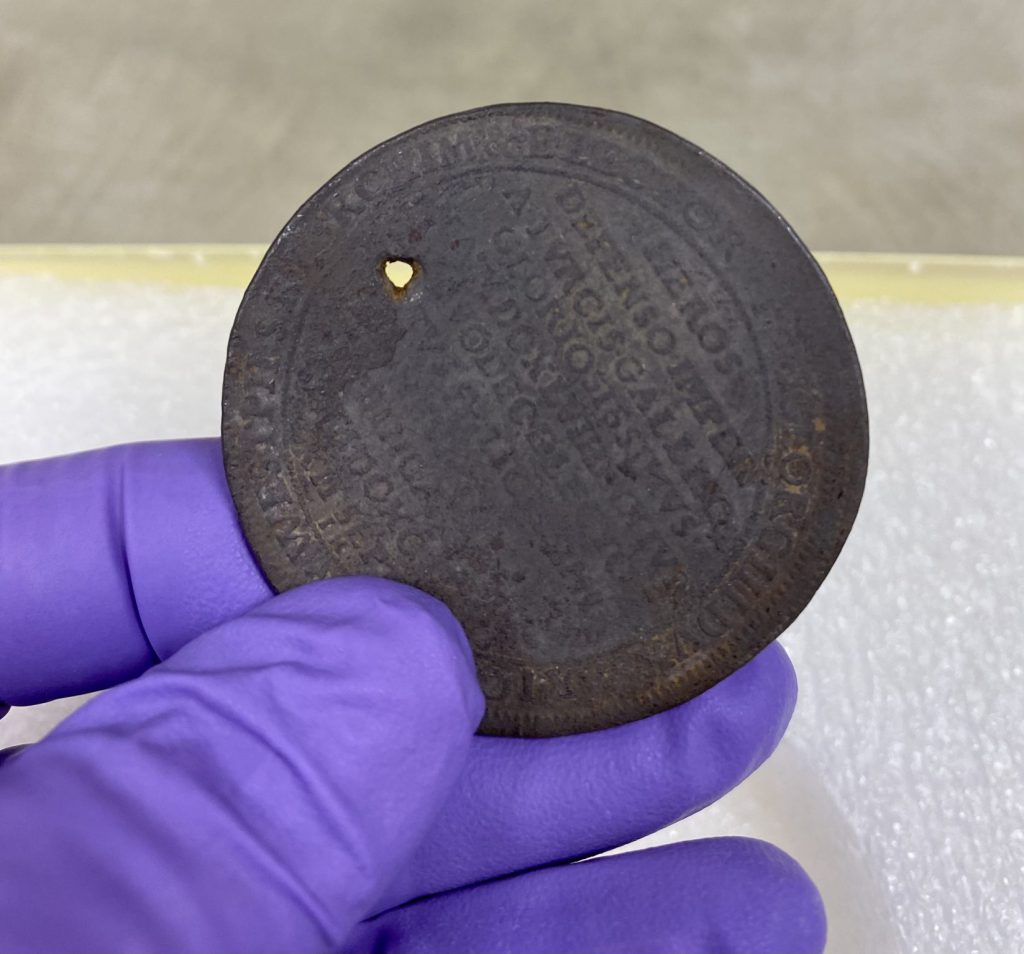After uncovering a pierced 17th-century German coin at Maryland’s Harriet Tubman Underground Railroad National Historical Park, archeologists are now trying to trace its steps from Western Europe over the past 330 years.
The 1691 “taler” – a large silver coin issued by various German states from the 1400s through the 1800s – marked the death of Johann George III, who served as Saxony’s elector, one of many electoral college members who elected the emperor of the Holy Roman Empire.
Researchers recovered the coin during an excavation at the Jacob Jackson Home Site, once the residence of a free Black man who also helped free Harriet Tubman and her brothers from slavery in Maryland in 1854.
Tubman later escorted hundreds of slaves along the Underground Railroad to freedom in Canada, where a provision to the 1793 Act to Limit Slavery stated any enslaved person who reached what was then Upper Canada (present-day Ontario) would be free from slavery. Altogether, between 30,000 and 40,000 people escaped slavery through the Underground Railroad, according to the Canadian Encyclopedia, which called it “the largest anti-slavery freedom movement in North America.”

Harriet Tubman guided enslaved African Americans along the Underground Railroad to St. Catharines, Ont., where a school bearing her name opened in 2015. Tubman is slated to replace former U.S. president Andrew Jackson on that country’s $20 banknote.
“Because the colonies did not produce much metal coinage, European coins were quite common in colonial America,” Jessica Costello, a museum specialist with the Northeast Museum Services Center (NMSC) and National Park Service, wrote for the NMSC Archeology & Museum Blog this September.
“The hole in this one makes it even more interesting. The perforation along the edge of this coin suggests that it was modified to be worn as a pendant.”
Archaeologists have recovered other pierced coins from areas “directly associated with enslaved African Americans,” added Costello.
While it’s impossible to know who modified or wore the coin, archaeologists believe once the hole was added, “it became more than a coin.”
“The process of piercing this taler imbued it with new meaning and importance. It could be strictly an object of adornment, selected and displayed because of its aesthetic qualities. Research suggests, however, that there is probably more to the story. It’s likely that this coin was worn as a protective charm, intended to keep evil at bay or bring good fortune.”

